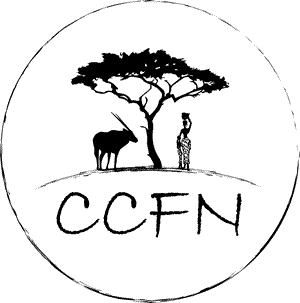... or "Why do we need the Community Conservation Fund of Namibia?"
The growth of Communal Conservancies
Namibia’s conservancy movement was launched with the passing of the 1995 Policy for Wildlife Management, Utilisation and Tourism in Communal Areas. The policy was enshrined in legislation through Act No. 5 of 1996: Nature Conservation Amendment Act, 1996, which empowered rural communities to form communal conservancies.
In 1998 the first four communal conservancies were gazetted: Nyae Nyae Conservancy, Salambala Conservancy, #Khoadi //Hôas Conservancy, and Torra Conservancy. The success of these pioneer conservancies was quickly realised, precipitating widespread participation of other communities in conservancy formation and a unique opportunity for Namibia to attain conservation at landscape scales.
There are currently 86 registered conservancies and 43 community forests, covering 180,083 km2 and encompassing over 227,802 residents.
Role of Civil Society and NGOs
A key element of CBNRM’s success in Namibia has been the endorsement of civil society and NGOs as strong partners, complemented by private sector business partners. This approach has facilitated the transfer of knowledge and skills to conservancies with respect to natural resource management, institution-building and governance, and development of business and tourism opportunities.
Donor support in the development phase
Namibia’s CBNRM Programme has attracted diverse donor support: donor and government investments to develop and implement the CBNRM Programme have amounted to approximately N$1.9 billion since 1990, largely by international funding agencies as USAID, DFID, SIDA, MCC, World Bank, KfW, and WWF. The investment has yielded a gross NNI contribution of N$5.03 billion - a highly successful investment.
From conservancy development to long-term maintenance: a new phase
The communal conservancy movement is now entering a critical transition stage from its largely donor-funded development phase to a longer-term, maintenance phase. The total number of conservancies is expected to reach a ceiling of approximately 90-100 within the next 3-4 years, while more and more of the registered conservancies are reaching levels of financial sustainability as their wildlife populations recover and partnerships with private sector prosper.
Given the importance of Namibia’s CBNRM Programme and affiliated conservancy movement, a National CBRNM Sustainability Task Force was formed in 2008. The Task Force has developed a National CBNRM Sustainability Strategy that gives recognition to the need to form a combined government/civil society conservancy extension support system to permanently provide Minimum Support Packages (MSPs) to communal conservancies.
The Minimum Support Packages have been developed based upon the three pillars of CBNRM:
- better natural resources management/monitoring,
- strengthened governance and institutional development for conservancies, and
- improved livelihoods through the development of business enterprises.
In addition, recognition is given to permanently sustaining long-term national level services to conservancies such as producing the annual State of Community Conservation Report, highly qualified technical support, and systematic training of CBNRM trainers. Key elements of this Strategy were incorporated into the 2013 Namibia National CBNRM Policy.
The need for an alternative funding mechanism
An imperative sustainability need for the conservancy movement is the reduction of the CBNRM Programme’s dependence upon external donor funding support. This is especially important because Namibia’s designation as a Medium Income Country has resulted in most donor agencies departing Namibia, leaving the Programme dependent upon a shrinking number of funding partners and vulnerable to collapse should such funding sources end.
The Task Force responded to this concern by pursuing the establishment of a conservation trust fund: the Community Conservation Fund of Namibia.
The CCFN will create a sustainable finance framework for a suite of important long-term support services to conservancies and community forests. The primary scope of the CCFN will be to fund critical support services (eg. Minimum Support Packages) to communal conservancies, and eventually, community forests. However, once established, it is envisioned that the CCFN will become a multi-purpose funding mechanism, including the housing of a fund to assist conservancies to mitigate the costs of increasing human wildlife conflict.
